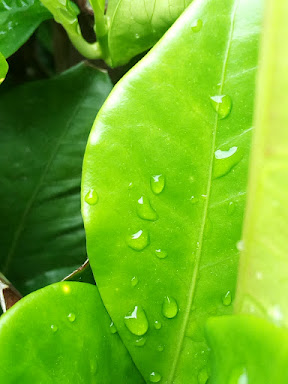A colour scheme is a special arrangement of colour based on some rules governing colour combination. Colour is one of the elements of design that can make and as well unmake a design or artwork if it is used inappropriately. Colour theory helps to understand the meaning of colours which helps to inform rightly the kind of colour choices a user of colour must make to ensure effectiveness in a design or artwork. This course focuses on the use of the twelve-point colour wheel based on the Artist's Subtractive Primary(RYB) to teach how best colours can be combined to achieve great results.
Primary colours of pigment
Red, Yellow, Blue
Secondary colours
Red + Yellow = Orange
Red + Blue = Violet
Yellow + Blue = Green
The twelve colours of this colour wheel are: Red, red-orange, orange, yellow-orange, yellow, yellow-green, green, blue-green, blue, blue-violet, violet, and red-violet.
The twelve-point colour wheel
At the top left of the colour wheel is a rectangular bar that shows the colours of the twelve-point colour wheel with their colour codes in hexadecimal values.
To make good use of the course and understand it well, practice is one thing that helps so, look at the colour wheel carefully to become aware of the colours in a way that they look more familiar to you.
fig 1
There are six rules or ways of combining colours to form a workable and effective scheme and these are: complementary, triadic, double complementary, split complementary, monochromatic, and analogous.
Complementary colour schemes
Two colours are complementary if they are directly opposite each other on the colour wheel. From fig 1, Red and green are complementary because they are directly opposite each other. Can you find other complementary colours? Another one is violet and yellow. Find other ones by yourself. Now complementary colours have some contrast between them which aids in creating contrast in a design. To create the scheme, you can use saturation of the complementary colours.
Triadic scheme
Tri means three, hence from the name, it is a combination of three colours that are equally spaced from one another. As shown in fig 1, red-violet, orange and blue-green form a triadic scheme.
Double-complementary scheme
It is formed by using two pairs of complementary colours. An example of this combination has been shown in the example above.
Analogous scheme
Analogous colours are colours near one another on the colour wheel and because they are near one another, there is little contrast between them. This makes this combination a good fit for projects that do not need high the use of colours with high contrast. It can be combination of three or more colours but stick to at most three to create a pleasing effect in a work.
Split-complementary scheme
Formed by picking adjacent colours to one of the members of a complementary colour. For instance, red and green are complementary so to form a split-complementary scheme, the colours red-violet, red-orange and green are chosen living red behind. So we chose, green which is complementary to red and the two adjacent colours to red which are red-violet and red-orange. This is how it works.
Monochromatic scheme
As the name clearly speaks it, it is formed by creating different saturations of the same hue. This scheme also creates a nice context in design and if used carefully it can show both high and low contrast depending on the choices of the same hue saturation used.
Some examples of the colour schemes created by the use of the rules outlined and explained earlier.
Designers work to satisfy the needs of clients and until this aim is met by a design work, the designer has not been successful. Colour is very crucial when it comes to design and this is the reason why it is very important to understand the basics of colour.
How to effectively use colour in design
Use colours deliberately.
For a successful designer, he puts particular elements in a design work because it is performing a function which he can explain. Be intentional and understand the design brief of a project very well, and get acquainted with the concept and the colours that best relate to that particular context. This is one of the things completed in the design process to come out with effective work. Read more on the design process Create a colour scheme
Creating a colour scheme helps to keep yourself limited to only certain colours that add definition to a specific design work hence you are not tempted to choose colours out of like but rather out of purpose and understanding. Great designers communicate with their colours in a design and this is what differentiates an amateur designer from a professional because he uses the colours by first understanding the psychology of the colours as well as the visual literacy level of the audience making him a better communicator using colours.


Comments
Post a Comment
Share your views on this insightful content